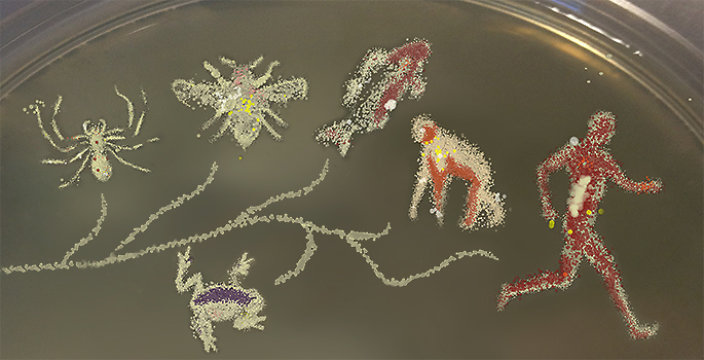Don't look now, but the pronoun "I" is becoming obsolete.
Recent microbiological research has shown that thinking of plants and animals, including humans, as autonomous individuals is a serious over-simplification.
A series of groundbreaking studies have revealed that what we have always thought of as individuals are actually "biomolecular networks" that consist of visible hosts plus millions of invisible microbes that have a significant effect on how the host develops, the diseases it catches, how it behaves and possibly even its social interactions.
"It's a case of the whole being greater than the sum of its parts," said Seth Bordenstein, associate professor of biological sciences at Vanderbilt University, who has contributed to the body of scientific knowledge that is pointing to the conclusion that symbiotic microbes play a fundamental role in virtually all aspects of plant and animal biology, including the origin of new species.
In this case, the parts are the host and its genome plus the thousands of different species of bacteria living in or on the host, along with all their genomes, collectively known as the microbiome. (The host is something like the tip of the iceberg while the bacteria are like the part of the iceberg that is underwater: Nine out of every 10 cells in plant and animal bodies are bacterial. But bacterial cells are so much smaller than host cells that they have generally gone unnoticed.)
Microbiologists have coined new terms for these collective entities -- holobiont -- and for their genomes -- hologenome. "These terms are needed to define the assemblage of organisms that makes up the so-called individual," said Bordenstein.
In the article "Host Biology in Light of the Microbiome: Ten Principles of Holobionts and Hologenomes" published online Aug. 18 in the open access journal PLOS Biology, Bordenstein and his colleague Kevin Theis from the University of Michigan take the general concepts involved in this new paradigm and break them down into underlying principles that apply to the entire field of biology.
They make specific and refutable predictions based on these principles and call for other biologists to test them theoretically and experimentally.
"One of the basic expectations from this conceptual framework is that animal and plant experiments that do not account for what is happening at the microbiological level will be incomplete and, in some cases, will be misleading as well," said Bordenstein.
The first principle they advance is that holobionts and hologenomes are fundamental units of biological organization.
Another is that evolutionary forces such as natural selection and drift may act on the hologenome not just on the genome. So mutations in the microbiome that affect the fitness of a holobiont are just as important as mutations in the host's genome. However, they argue that this does not change the basic rules of evolution but simply upgrades the types of biological units that the rules may act upon.
Although it does not change the basic rules of evolution, holobionts do have a way to respond to environmental challenges that is not available to individual organisms: They can alter the composition of their bacterial communities. For example, if a holobiont is attacked by a pathogen that the host cannot defend against, another symbiont may fulfill the job by manufacturing a toxin that can kill the invader. In this light, the microbes are as much part of the holobiont immune system as the host immune genes themselves.
According to Bordenstein, these ideas are gaining acceptance in the microbiology community. At the American Society of Microbiology General Meeting in June, he convened the inaugural session on "Holobionts and Their Hologenomes" and ASM's flagship journal mBio plans to publish a special issue on the topic in the coming year.
However, adoption of these ideas has been slower in other fields.
"Currently, the field of biology has reached an inflection point. The silos of microbiology, zoology and botany are breaking down and we hope that this framework will help further unify these fields," said Bordenstein.
Not only will this powerful holistic approach affect the basic biological sciences but it also is likely to impact the practice of personalized medicine as well, Bordenstein said.
Take the missing heritability problem, for example. Although genome-wide studies have provided valuable insights into the genetic basis of a number of simple diseases, they have only found a small portion of the genetic causes of a number of more complex conditions such as autoimmune and metabolic diseases.
These may in part be "missing" because the genetic factors that cause them are in the microbiome, he pointed out.
"Instead of being so 'germophobic,' we need to accept the fact that we live in and benefit from a microbial world. We are as much an environment for microbes as microbes are for us," said Bordenstein.
Source:
Vanderbilt University. (2015, August 19). Will the pronoun I become obsolete? A biological perspective. ScienceDaily. Retrieved August 19, 2015 from www.sciencedaily.com/releases/2015/08/150819120658.htm


